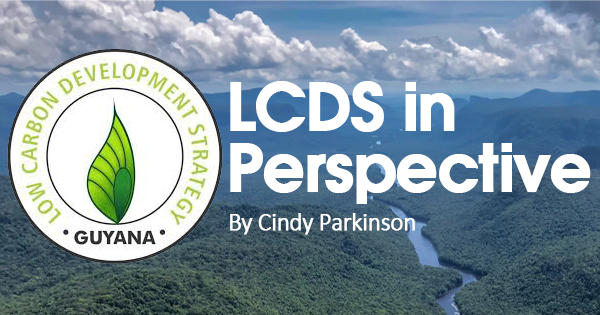OWING to their strong connection with the diverse biodiversity and vital resources of the forest, which sustain their way of life and traditional customs, Amerindians have served as custodians of Guyana’s forests for numerous centuries, with 86 percent of the country’s land covered by forests.
This makes it the country with the second-highest percentage of forest cover (in relation to land cover) globally, and an essential element of the meticulously planned Low Carbon Development Strategy (LCDS 2030).
Following the nationwide consultations from October 2021 to July 2022, the People’s Progressive Party/Civic (PPP/C) government expanded the work that had been started in 2009 by the first LCDS under the leadership of former President, Dr. Bharrat Jagdeo.
The National Toshaos Council (NTC), which serves as the national representative body for Indigenous peoples across all regions of Guyana, has accepted and officially endorsed this comprehensive approach. A consensus was reached to allocate 15 percent of the proceeds generated by this mechanism towards the advancement of Amerindian development, with further investments planned for national and regional initiatives.

The government has recently engaged in a groundbreaking agreement worth US$750 million with Hess Corporation, a prominent participant in the worldwide energy sector. As part of the deal, Hess Corporation will acquire 30 percent of Guyana’s forest carbon credits over a span of ten years.
In 2023, an initial payment of US$150 million was made. Out of this sum, a total of US$22 million (equivalent to GYD$4.7 billion) was deposited into bank accounts specifically designated for 242 Amerindian villages and communities across the country.
By investing in key sectors such as programmes for women and youth, tourism, agriculture, and other projects that generate income, the Indigenous villages can effectively plan their growth and prosperity, while promoting sustainable development in each village.
In a diverse range of industries, including industrial arts, tourism, agriculture, and food security, there are currently more than 811 projects being simultaneously implemented. The purpose of these projects is to support sustainable ways of living for the people in their Amerindian communities. The notable feature of the programme is that it provides village leaders with the necessary resources to ensure effective and sustainable project management in their communities. The responsibility for planning and implementing all projects lies with the villages.
Moco Moco, one of the villages in Central Rupununi, Region Nine, has made use of its resources to promote entrepreneurship, integrate young people into the industrial arts industry, and improve food security. First tranche proceeds from the sale of carbon credits came to the community in the sum of $24 million.

The allocations have helped the villagers establish a four-acre cassava farm, and work is still being done to prepare the ground for the planting of red beans and maize, according to Toshao Thomas George. In addition, a conference hall was built, removing the difficulty that previously existed for students when activities and meetings had to be held at the elementary school.
By starting a large-scale cash crop farm with $9 million in carbon credit investment, the Quiko village also achieved tremendous progress towards obtaining food security and financial stability. In order to carry out initiatives in priority regions, Apoteri Village, located in Region Nine, was allocated $15 million in carbon credit resources for 2023.
Furthermore, in order to promote food security and sustainable agriculture, Maikwak, a community in the North Pakaraimas, invested $13 million to acquire a backhoe loader. This equipment will greatly assist the village in carrying out its development initiatives. These are just a few of the transformation projects taking place in the many Amerindian communities throughout Guyana.
Furthermore, $2.7 billion would be made accessible to the Amerindian villages across the country, as was stated during the reading of the 2024 National Budget. The government also finances investments in social services, health, and education, as well as through the distribution of Presidential Grants and capital projects.
It is important to mention that 85 percent of the revenue generated from carbon credits will directly benefit villages. Additionally, further funding will be allocated to support initiatives aimed at adapting to and strengthening resilience to climate change in both villages and throughout Guyana. By utilising the remaining 85 per cent, we can further support the Amerindian villages, in addition to the 15% already allocated.
(This is part of a weekly series on LCDS.) The author can be contacted at [email protected])



